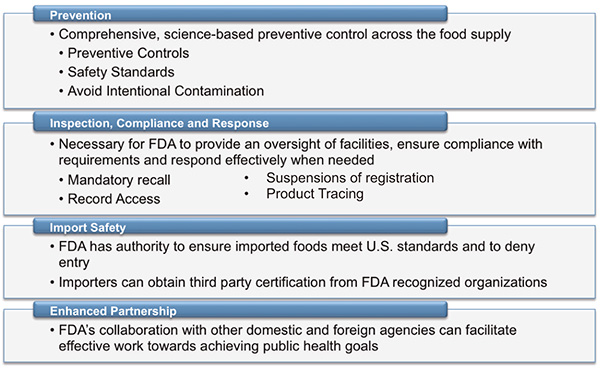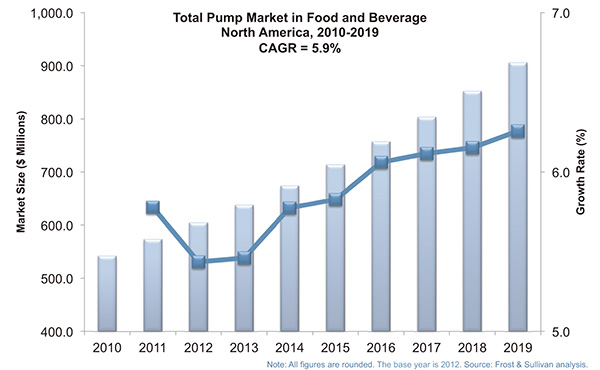From increasing raw material costs to changing food consumption patterns, the food and beverage industry has faced a number of changes during the past couple years. The U.S. food and beverage market is one of the largest in the world and contributes more than 14 percent to the country’s total manufacturing output. Additionally, the demand for food products is less susceptible to changes in the economic landscape and was one of the industries least affected by the 2009 economic recession.
The manufacturing of processed foods increased as the demand for ready-to-eat home foods rose versus eating at restaurants. An increased sale of frozen food and private labels occurred during the recession because these helped consumers cut down on their household expenses. Although inflation, supply chain management and quality control are some of the major challenges faced by the industry, demand for processed foods continues to drive the food and beverage industry.
This increasing processed food industry faces pressure from public agencies and consumers to produce healthy products while maintaining right margins. Nutritious and organic foods are expected to have a large impact on the industry. To remain competitive, food manufacturers are making headway by taking several positive steps toward the health and wellness trend. Reformulation of products to have high nutritional value, partnering with organizations for health accreditations and adhering to government regulations proactively are a few of the steps being taken.
Also, growing concerns about obesity and other heart-related diseases increased awareness of diet-related food segments. Most manufacturers are revamping their product offerings with a special focus on nutritional content. For example, the salt and sugar content is being reduced in a number of products to become healthy snack options. Increased consumer demand because of these changes is likely to accelerate the growth of this segment into one of the largest in the food and beverage industry. Rising costs have an impact on the industry, but with consumers’ increasing demand for good food and beverages, they are willing to pay a premium.
The food and beverage industry is highly fragmented in the U.S., with an increasing number of mergers and acquisitions taking place. Consolidation, rising costs, changing consumer preferences and increasing regulations are dramatically changing the landscape of the industry. Innovations and technology will play a key role in successful strategies. As a result, a proactive approach to addressing regulatory issues—paving the path toward a risk-free business—is most important.
FDA’s Food Safety Modernization Act and its Influence
Food manufacturing is complex—including the equipment design, manufacturing processes, packaging and distribution. With numerous concerns from several public bodies regarding food safety, the U.S. Food and Drug Administration (FDA) designed the Food Safety Modernization Act (FSMA) to fortify the existing system. The FSMA is divided into four main elements:
Prevention
Inspection, compliance and response
Import safety
Enhanced partnership
 |
| The four elements of the FSMA |
The ultimate goal is to achieve an impeccably clean and disinfected result under a tight control of costs.
The FSMA’s primary focus is prevention. To implement preventive controls, the processors are required to evaluate the hazards in their operations and implement and monitor measures to prevent accidental and deliberate contamination. They are also required to have a corrective plan in case of a breach. The FDA ensures the adequacy and proper implementation of these plans, called Hazard Analysis and Risk-Based Preventive Controls (HARPC), along with a mandatory recall to swiftly remove contaminated products from the market. To maintain an efficient inspection system, the FDA will strengthen its collaboration with many food safety agencies.
The FSMA has been acclaimed as the most comprehensive food safety law in the last three decades. It places the responsibility on manufacturers to enforce its provisions within the specified compliance dates, which vary from one year to three years based on the size of the facility. Fierce competition and the need to optimize costs require manufacturers to take a proactive stand in implementing the system by documenting hazard plans for prevention and corrective measures, evaluating traceability and recall plans, and actively participating in the FDA’s upcoming activities. These factors hold good for the equipment manufacturers and for those who must adhere to these requirements during product design.
The food properties are impacted by the conditions inside the equipment—such as shear rate, residence time, temperature history and moisture levels—which can impact food quality. Some examples in design consideration include the requirement of surfaces in contact with food to be stainless steel, because stainless steel offers excellent corrosion protection and is not affected by the pH of the food. The hygienic designs should be maintained by minimizing the dead spots and supporting cleaning-in-place/sterilization-in-place (CIP/SIP) requirements.
Pump Market Outlook
The total pump market in the U.S. food and beverage industry was estimated at $604.5 million in 2012, which is steadily growing at a compound annual growth rate (CAGR) of 5.9 percent. With increasing investment in new expansions and the revamping of older facilities, pump manufacturers experience a constant growth in demand for pumps with sanitary requirements.
 |
Pump market overview
The total pump market for sanitary applications in the food and beverage industry in the U.S. is projected to reach $657 million in 2019. Positive displacement pumps will experience a higher growth rate because of their functional advantages in food processing. These pumps are beneficial to the shear-sensitive nature of these products because the flow rates can be uniformly controlled and product loss is minimized.
Diaphragm and peristaltic pumps are gaining popularity because the pumped product does not contact their metal surfaces. The tubing in these pumps can be regularly replaced to adhere to sanitary requirements, maximizing production up-time.
With changes in regulations, food manufacturers are becoming proactive to ensure maximum safety in production. The FSMA has provisions making a number of mandatory changes in the Current Good Manufacturing Practices (cGMPs) and Sanitation Standard Operating Procedures (SSOPs). As a result, the demand for pumps fulfilling sanitary requirements is expected to increase further. The expectations from pumps catering to different segments—for instance, the juice and seafood segments that have already been covered by hazard analysis and critical control points (HACCPs)—vary according to the extensiveness of the regulations.
Pump manufacturers have many opportunities to increase their growth in the future. Innovation in handling the regulatory changes and extending services to facilities to help them prepare safety plans are some strategies for pump manufacturers to move to the next level. Also, smart pumps are creating interest in the regulatory and efficiency fronts and play a promising role in the pump market. P&S


